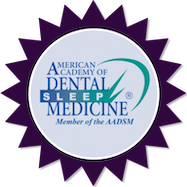Craniofacial Pain Treatment
We live in a world full of so many different people. The diversity of our country makes it so unique. And just as the people around us are unique, so are the treatment options we offer. Every patient requires the best care possible, so we need to make sure the treatment is mapped out to their unique, individual needs.
When addressing your treatment plan, we will look at your symptoms first. Depending on those, a proper treatment plan will be established. Paying attention to your pain, we may suggest several treatments throughout the process. But don’t lose faith. We will make sure the end result is pain relief so you can continue to live a healthy, happy life.
What treatment options are available?
We won’t list every single option, but we will focus on some of the main treatment options for craniofacial pain. Here are some of the options we will consider when addressing your craniofacial pain.
Let’s start with physical therapy. When there is contraction of the muscle from a taut band and muscle trigger point, then we may consider physical therapy by a trained professional. By massaging the muscle in long strokes—combined with stretching exercises—it may help relieve the tension. A physical therapist can also recommend exercises to improve posture for long term results.
Next up is trigger point pressure release. This involves gradually increased pressure at the muscle trigger point. What we mean is, this will help to soften any knotty muscle tissue in the trigger point and taut band. It helps to do exactly what the name implies: release the pressure.
Similarly, we can also try the use of spraying very cold spray on the muscle while stretching. This will temporarily distract the muscle and allow your therapist to stretch the muscle to the point of release. Once the trigger point is released, the muscle can be moved through a full range of motion to provide relief. However, it is important for you to continue to stretch and strengthen your muscles through various exercises between physical therapy sessions.
Going beyond physical therapy, we can turn to trigger point injections, which work to relax tension of the trigger point and relieve associated pain. Through this, the trigger point is released and can then be more effectively addressed with physical therapy.
Another option is medications. Temporary pain relief is so important when it comes to treatment of craniofacial pain. The temporary relief can really help us as we continue to manage your pain and find the best solution possible. We might recommend over the counter NSAIDs, such as ibuprofen and naproxen to manage the pain, but can work with you to determine the best option.



Is craniofacial pain treatment successful?
Absolutely. It can be very successful, but it is also dependent on your level of health or the severity of the injury (if it is caused by an injury). Your rate of improvement might also vary as well. This is typically based on your health and well-being. What improves your rate of success is:
- Overall physical fitness and health.
- Compliance with self-care and at-home treatment.
- Underlying skeletal abnormalities.
- Depression, anxiety or stress.
- Nutrition.
- Quality of sleep.
- Other medical conditions.
Individualized treatment is so important for ensuring success. Contact Dr. Fuller to learn more about craniofacial pain and how she can help provide you with treatment that works.
Contact Us Today
Our Hours:
Monday: 8am-5pm
Tuesday: 8am-5pm
Wednesday: 8am-5pm
Thursday: 8am-2pm



